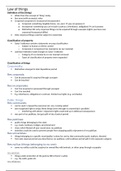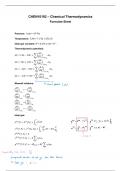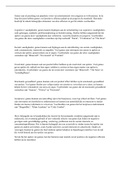Summary
Roman Law 271 entire year summary
- Module
- Institution
- Book
An in-depth document covering all of the work done in the year (semester 1 & 2). Includes notes made in class & textbook & additional material summaries. set out in an organised manner which makes the subject easy to understand. This covers all of the prescribed work done which will form part of th...
[Show more]






